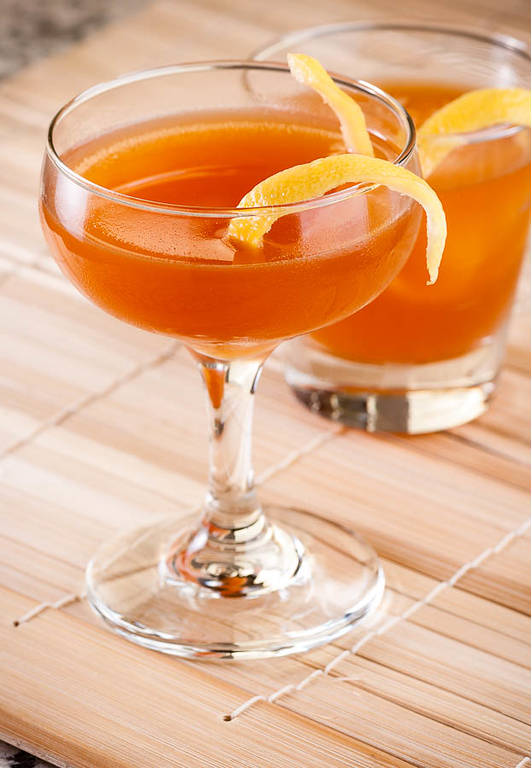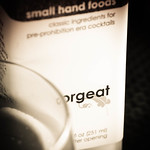It’s June, 1860, just months before the start of the American Civil War. The Pony Express has just made it possible to send a letter overland to San Francisco in just a few days; Abraham Lincoln is busy getting himself elected President of the United States; and Jerry Thomas is writing The Bon-Vivant’s Companion and working at New York’s 622 Broadway bar.
A block down the street, the Japanese Shogun’s first ambassadors to America are ensconced in the Metropolitan Hotel. They are the first Japanese many Americans have ever seen. Exotic, reserved and mysterious, they are quite the rage of New York. Parades, banquets and ceremonies are held in their honor. They are the social event of the season.
One young man in the entourage interests the press and the public—especially the female public—more than the others. He is Tateishi Noriuki, seventeen years old, and the nephew and apprentice of the delegation’s interpreter. Exotic he may be, but reserved he is not. Known as “Tommy,” he is more a rage than all the rest put together. It seems Tommy’s uncle kept a surprisingly slack rein on the lad, and Tommy managed to cut quite a figure as a man-about-town.
He was also partial to cocktails. In fact, it seems most of the Japanese delegation was partial to cocktails, and in a big way. It’s easy to imagine that they found their way down the street to Thomas’s bar; even if they didn’t, it’s even easier to imagine a showman like Thomas inventing a cocktail to celebrate the social and diplomatic sensation of the season.
It’s notable that the Japanese Cocktail seems to be one of the few cocktails in Bon-Vivant’s Companion that was actually a Thomas original, as opposed to drinks of long standing in the trade. Another curious thing about the Japanese Cocktail, as David Wondrich suggests in one of his Esquire articles, is that it is “the first cocktail on record to have a name not reflecting its ingredients; an artistic name, not a functional one [as] there’s nothing Japanese in the drink…”

A simple blend of brandy, orgeat, and bitters (and ice), the Japanese follows the template of the classic cocktail, the style we would now call the Brandy Old-Fashioned, but it is also the first recorded cocktail to use orgeat, instead plain sugar, as a sweetener; it introduced the concept of “fancy” cocktails that explored the use of liqueurs and other alternative sweeteners in the cocktail realm.
The Japanese Cocktail
- 2 oz brandy (Ferrand 1840)
- ½ oz orgeat (Small Hand Foods)
- 2—4 dashes bitters (Bitter Truth Jerry Thomas, Fees Old-Fashioned, Angostura)
- lemon twist for garnish
Shake liquids with ice until cold; strain into a rocks glass over ice, or into a well-chilled cocktail stem. Express and garnish with lemon.
The flavor of the Japanese cocktail is controlled mainly by the orgeat and the bitters. There aren’t many brands of orgeat on the market, and it’s something you can make yourself if you enjoy such things. Depending on the sweetness and nuttiness of the brand you choose, you may want to adjust the 4:1 proportions of the original Jerry Thomas recipe.
(I don’t recommend cutting back too far on the orgeat. David Embury suggested an 8:1 proportion in his 1948 Fine Art of Mixing Drinks; I often agree with Embury’s spirit-heavy stylings, but here it doesn’t work—the drink just tastes like bad brandy.)
The Japanese cocktail needs a full-flavored brandy. The Ferrand 1840 is a good choice, as would be a good cognac like Remy VSOP.
Thomas’s original recipe called for a half-teaspoon (!) of the now-defunct Bogart’s bitters. A half-teaspoon is a pretty hefty load of bitters, so either Bogart’s was pretty bland, or Thomas intended the Japanese cocktail to have a very spicy kick. I suspect it was the latter. The final 1887 edition of Bon-Vivant’s Companion changed the specification to two dashes of Boker’s, which has recently returned to the market after a long hiatus. (I haven’t had the opportunity to try it.)
 Your choice of bitters can have a significant effect on the drink, and there is plenty of room for experimentation. I’m partial to a good hit of cinnamon with this combination; the Fee’s Old-Fashioned Bitters is my favorite choice for the Japanese, but I’ve also made good versions with Bitter Truth’s Aromatic and Jerry Thomas Bitters.
Your choice of bitters can have a significant effect on the drink, and there is plenty of room for experimentation. I’m partial to a good hit of cinnamon with this combination; the Fee’s Old-Fashioned Bitters is my favorite choice for the Japanese, but I’ve also made good versions with Bitter Truth’s Aromatic and Jerry Thomas Bitters.
Most modern recipes specify two dashes of the readily available Angostura, which blends very pleasantly with brandy and orgeat, and is an excellent, if unexciting, substitution.
Thomas’s original presentation of the Japanese cocktail was typical for old-fashioned-style drinks: he built in over ice in a standard bar glass or rocks glass. The modern presentation is strained into a chilled cocktail stem. The drink suffers from dilution, so the stem presentation is much superior to the original.
The nose of the Japanese cocktail is almost all lemon—the other ingredients contribute very little, or are buried under the fresh citrus.
The initial flavor is gently sweet, and dominated by the brandy. The middle flavors are from the almond nuttiness of the orgeat, and then there is a long aftertaste of the bitters in the swallow—this is the thing that drives my preference for cinnamon, which makes a very pleasant, lingering sensation. Since the bitters are the long-lasting part of the drink, different styles of bitters will offer different senses of the overall flavor of the Japanese cocktail.
My favorite thing about the Japanese cocktail is its history as the earliest example of new experimentation in the possibilities of the cocktail, leaning away from the strict spirit-sugar-bitters “Old-Fashioned” styling toward the more modern “fancy” cocktail, with more exotic combinations of sweeteners, liqueurs, vermouths and amaros.
“The Japanese Cocktail” at cold-glass.com : All text and photos © 2014 Douglas M. Ford. All rights reserved.

I was out a couple months back and the bartender made this with the addition of lime juice. I was fairly certain the recipe did not include it but it had been awhile since I made one so I wasn’t sure. It was actually quite tasty. I have since seen a recipe here and there that add 1/2 oz lime to the standard Cognac and orgeat measures. Definitely worth a try. On a side note he used a lovely french orgeat by Giffard which I had never seen but have been able to locate since. It really makes the difference in all my orgeat cocktails. Thanks for the Brandy Crusta post by the way. I never felt like doing the whole garnish routine and had forgotten how much I like it! Cheers!
I can imagine how a touch of lime could work with the Japanese, giving it bit of a brightening. A half ounce seems a lot, but I look forward to trying it.
I’ve heard of the Giffard orgeat, but it doesn’t seem to be available in my region, so never tried it. I’ll watch for it, thanks!